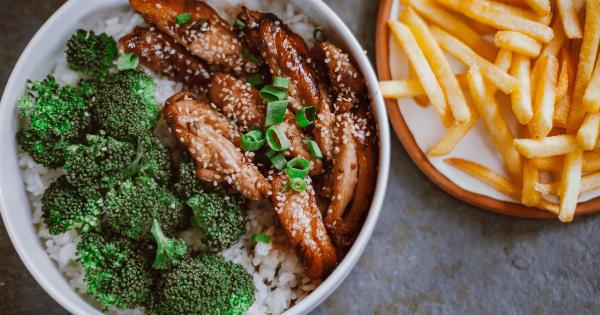Do you often find yourself being conscious about your breath? Bad breath, scientifically known as halitosis, is a common issue that affects many people.
While poor oral hygiene and certain medical conditions can contribute to bad breath, the types of food we consume can also play a significant role. In this article, we will explore the four types of food that are notorious for creating unpleasant breath.
1. Onions and Garlic: The Culprits Behind Persistent Odor
Onions and garlic are undoubtedly flavorsome additions to your favorite dishes, but they can wreak havoc on your breath. These pungent ingredients contain sulfur compounds that linger in your mouth even after digestion.
As you speak or exhale, these compounds are released, causing a persistent, unpleasant odor.
One way to counteract the effects of onions and garlic is by chewing parsley or mint leaves after consuming these foods. These herbs contain natural deodorizing properties that can help neutralize the foul odor.
2. Spicy Foods: An Excitement for Your Taste Buds, Not Your Breath
For those who enjoy a fiery kick in their meals, spicy foods can be irresistible. However, the same compounds that give these foods their heat, such as capsaicin in chili peppers, can also contribute to bad breath.
Spicy foods can cause an increase in saliva production, leading to a dry mouth. Without sufficient saliva to wash away bacteria, unpleasant breath ensues.
Drinking plenty of water while consuming spicy foods can help alleviate dryness and reduce the chances of bad breath. Additionally, sugar-free chewing gum stimulates saliva production, aiding in keeping your breath fresh.
3. Dairy Products: Delicious but Sometimes Smelly
Dairy products like milk, cheese, and yogurt are packed with essential nutrients, but they can also contribute to foul breath. Lactose, a sugar present in dairy, can be difficult for some individuals to digest.
When lactose remains undigested in the gut, it can lead to an overgrowth of bacteria, resulting in oral odor.
Brushing your teeth or using a tongue scraper after consuming dairy products can help remove any residue and bacteria, helping to combat bad breath.
Additionally, opt for lactose-free or non-dairy alternatives if you frequently experience unpleasant breath after consuming dairy.
4. Coffee and Alcohol: Not Just Disrupting Your Sleep, but Your Breath Too
Many of us rely on the caffeine boost from our morning cup of coffee or unwind with an occasional alcoholic beverage. However, both coffee and alcohol can contribute to bad breath.
Coffee, especially when consumed without moderation, can cause a dry mouth due to its diuretic effects. Alcohol, on the other hand, is notorious for reducing saliva production and resulting in a dehydrated mouth environment where bacteria thrive.
Limiting your intake of coffee and alcohol and ensuring proper hydration can help minimize the impact on your breath. Drinking water in between caffeinated or alcoholic beverages can also help wash away any lingering compounds.
In Conclusion
Awareness of the types of food that contribute to unpleasant breath can help you make informed choices for fresher breath.
While avoiding these foods entirely may not be necessary, moderation and proper oral hygiene practices can help keep bad breath at bay.





























